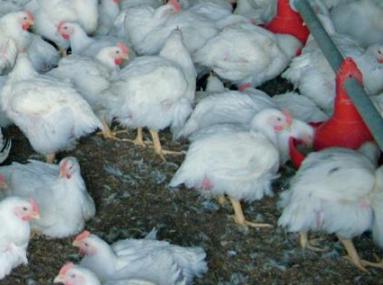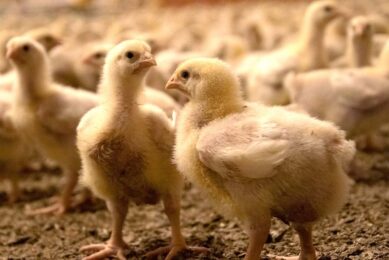Healthy liver, healthy birds

Commercially grown birds process large amounts of feed. The liver plays a crucial role. Natural stimulants may help in keeping the liver in a good condition, thus ensuring healthy birds.
By Dr Mrigen Dutta, Zydus Animal Health, Ahmedabad, India
With poultry farming profits becoming marginal because of the increasing price of feedingredients, enhancing farm productivityby improving feed utilisation has become a core issue. The liver, being one of the most vital organs of the body, constitutes the lifeline system of animal. This organ also plays a major role in the digestion, metabolism and utilisation of feed nutrients.
Being the centre of a number of digestive, metabolic and productive activities, the liver is ever endangered by microbial and chemical toxins. These toxins may cause varying degrees of damage to the liver and affect its functions, thereby resulting in poor health and production.
The liver and its functions
The liver consists of a right lobe and a left lobe. The left lobe in the chicken and turkey is sub-divided into lateral and medial parts. In large birds, it may be possible to palpate the liver beyond the edge of the sternum. After hatching, the liver lobes have a bright yellow colour because of the pigments they absorb along with the lipids of the yolk. The colour gradually changes to the mahogany-brown between 8-14 days.
The liver is also one of the busiest organs in body. It carries out a large number of important digestive, metabolic and excretory activities, all of which have a significant role on the health and productivity in poultry. The functions of liver are detailed below.
Detoxification – Toxic substances of feeds, as well as the toxins produced in the body, are detoxified by the liver.
Protein metabolism – Dietary proteins are hydrolysed in the intestine by the action of numerous proteases and peptidases, resulting in production of free amino acids. These amino acids are absorbed by the intestinal cells and passed into the portal vein. They then enter the liver and are transported via systemic circulation to other tissues and organs. Excess amino acids, which are not utilised for the synthesis of tissue proteins, hormones, enzymes etc., are catabolised by the liver. The catabolism of amino acids involves deamination whereby ammonia and keto-acids are formed. Ammonia is toxic for the birds. The released ammonia is converted into uric acids in the liver and excreted through the kidneys. Plasma proteins (like albumin, fibrinogen and prothrombin) are formed in the liver.
Fat metabolism – The liver produces bile, which plays a very important role in the digestion of fat. With the assistance of choline, the liver is able to transform the depot fats into tissue fats so that the tissues can utilise them for energy.
Carbohydrate metabolism – Glycogen is synthesised and stored in the liver. Excessive carbohydrates that are ingested by the bird are converted into lipids and are stored as fat in the body. The liver, with the assistance of pancreas, maintains a constant level of blood glucose. In urgency, glucose is synthesized from proteins and fats in the liver, i.e. gluconeogenesis.
Vitamin metabolism – The liver helps in the absorption of fat-soluble vitamins A, D, E and K. Vitamin A is stored in the liver and released when the tissues require it. Vitamin K is utilised in the liver for the formation of prothrombin, which is required for clotting of blood in haemorrhages. Some members of the vitamin B group, especially B1, B2 and Niacin are metabolised in the liver, where they may also be stored.
Iron metabolism – The lifespan of erythrocytes in chickens is 20-30 days. After this period, the erythrocytes are destroyed in the liver and the minerals (iron, copper and cobalt) released are stored in liver for the use by the body.
Erythropoiesis – The formation of red blood cells (RBC) is called erythropoiesis. In birds, the liver is the site for erythropoiesis. Haemoglobin is synthesised in the liver.
In the event of liver hypo-functioning, birds may suffer from many recurring problems. A healthy liver will certainly help to ensure a healthy bird, and therefore this organ needs special care.
A variety of growth and production enhancers have come to be employed in poultry production to enhance poultry productivity. Herbal liver tonics act by protecting the liver from toxins and stimulating the liver function and thus, enhance growth and production performance. The use of a liver tonic liquid or powder varies from farm to farm, depending on the farmers’ preference. In general, liquid liver tonics for water administration are preferred for the curative purpose as during liver disorder, feed consumption decreases significantly. As a regular plan to prevent liver disorder and as an aid to improve productivity, powder forms of liver tonic, as feed additive is more convenient and also more cost effective. Nevertheless, irrespective of the preference for powder or liquid form, poultry farming has a natural scope for employing both forms of liver tonics, even if under particular conditions.
Beneficial plant extracts
With the increasing demand for organically grown poultry, the use of naturally occurring ingredients could be of economic importance to improve health and farm productivity. Nature provides many herbs that are shown to exert beneficial actions on the liver, thus helping improve farm productivity. Some important herbs, having major activity on the liver for its protection and to enhance functions are described below.
Phyllanthus niruri:
Plants of the genus Phyllanthus have been used widely by traditional medical practitioners for the treatment of jaundice and other liver disorders. The plant extract consists of phyllanthin, triacontanel and related compounds that have stomachic, hepato-protectiveand anti-hepatotoxic activities. Phyllanthusniruri also possesses anti-viral activity, which is believed to reduce the viral replication. Phyllanthus niruri is known by the common name “Stone-breaker”, as it is also used as an herbal remedy for urinary calculi (it reduces urinary calcium). Hence, in poultry, in addition to its use as liver tonic, the plant may also have great economic importance to prevent and control one of the most common diseases – Gout.
Andrographis paniculata:
The dried aerial parts, preferably leaves and stems of Andrographis paniculata, are used. Here, the major chemical constituents are Andrographolide and diterpene lactone. Andrographolide and related diterpenes are hepato-protective and hepatic stimulant agents. These compounds also possess choleretic (stimulate bile secretion), anti-inflammatory, anti-diarrhoeal, immuno-stimulant and anti-oxidant activities. Besides the use as liver tonic, being a potent immuno-stimulant, it can also be used to improve immune response to vaccination and infections.
Eclipta alba:
The whole plant of Eclipta alba will be used. The leaf extract is considered a powerful liver tonic and rejuvenative.
It is an established hepato-protective. The plant extract exhibits anti-mycotoxic and anti-haemorrhagic activities. It also has profound anti-hepatotoxic activity, which is attributed to wedelolactone and demethylwedelolactone, which are the major chemical constituents of Eclipta alba.
Boerhavia diffusa:
The drug used from this plant will make use of the dried, mature whole plant of Boerhavia diffusa. Major chemical constituent of the plant is Punarnavoside, an antifibrinolytic glycoside. This plant possesses potent anti-fibrinolytic and anti-inflammatory properties. The plant extract also exhibits diuretic and hepato-protective activities.
Picrorhiza kurroa:
Dried rhizome and roots of Picrorhiza have been traditionally used for many beneficial actions. Major chemical constituents include iridoid glycosides, picroside I and kutkoside. This plant is known to possess hepato-protective, anti-hepatotoxic, choleretic, anti-oxidant and anti-inflammatory activities. In addition, the plant is a potent immuno-stimulant of both cell mediated and humoral immunity.
Chicorium intybus:
This is also known as Chicory. It acts as apotent anti-hepatotoxic, hepato-stimulant and cholagogue. It is known to be useful in the treatment of jaundice, fatty liver, depression of liver, biliary stasis as well as enlargement of spleen and liver.
Maximisation of animal production as per the genetic potential is essential for profitability. The liver plays many vital roles for the maintenance of health and efficient utilisation of feed ingredients. Combinations of the herbs (as described above) are available for use in poultry, which can be used as feed additives to prevent liver disorders, and as an aid to improve feed utilisation, thereby improving farm productivity. Hence, nature’s boon, herbal liver tonic can play an integral role in poultry farming to bring about maximum productivity as per the genetic potential.
World Poultry Vol. 25 No. 6
Join 31,000+ subscribers
Subscribe to our newsletter to stay updated about all the need-to-know content in the poultry sector, three times a week. Beheer
Beheer








 WP Admin
WP Admin  Bewerk bericht
Bewerk bericht